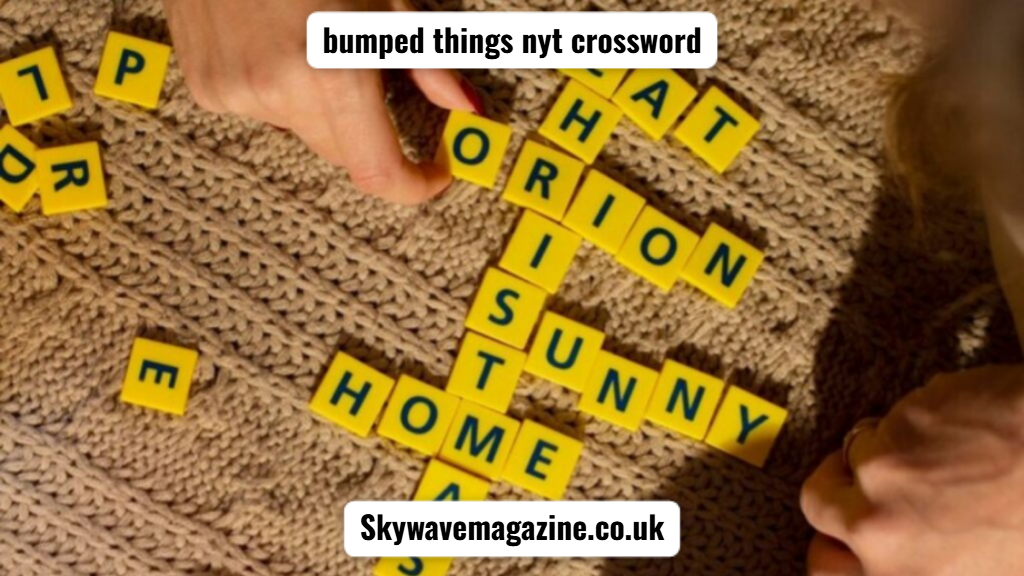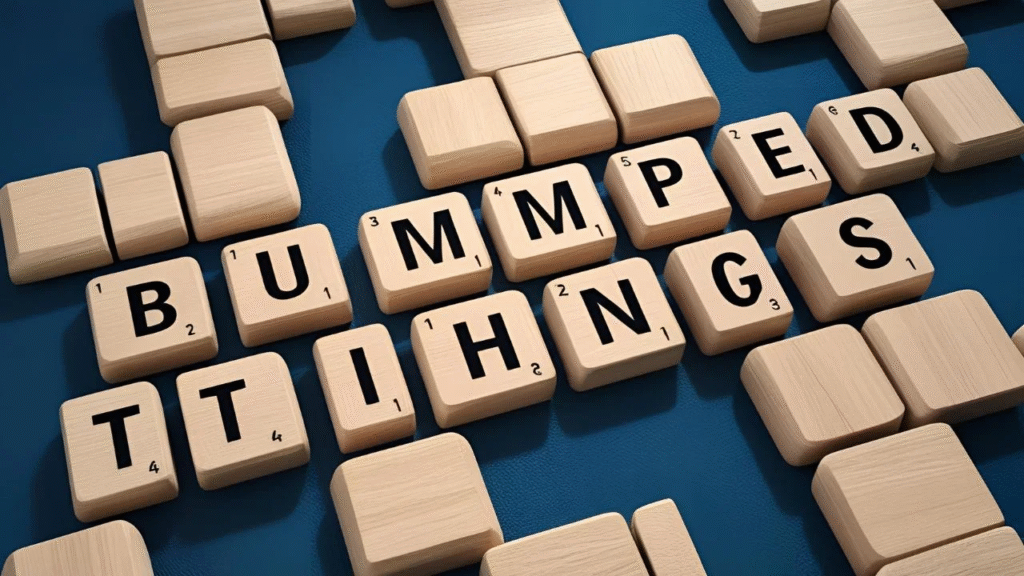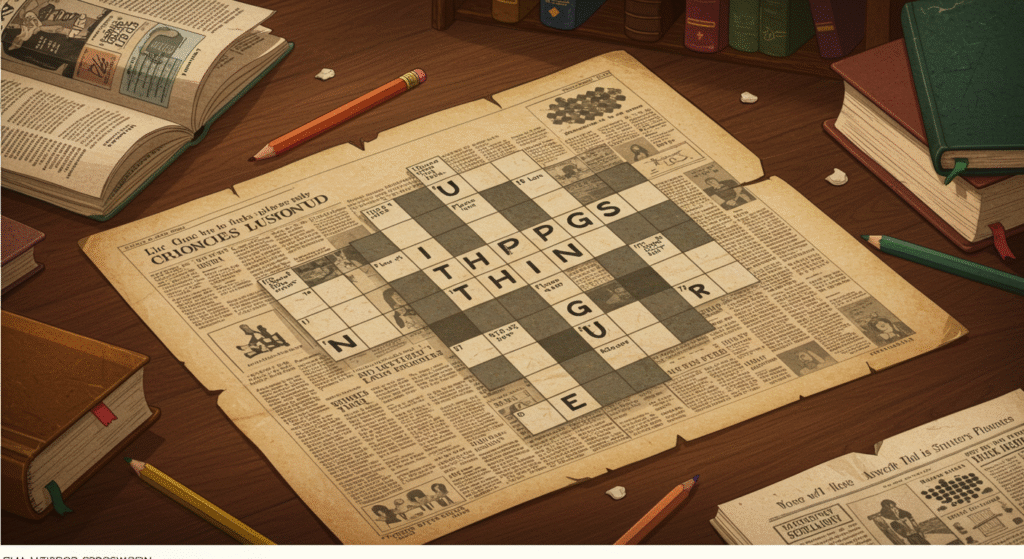
The clue bumped things nyt crossword often refers to “ELBOWS” or similar body parts used for bumping. It’s a common type of playful clue in the New York Times Crossword.
The phrase bumped things nyt crossword usually points to body parts like elbows or shoulders, which naturally fit the clue’s playful style. The New York Times Crossword is known for its clever wordplay, and clues like this challenge solvers to think figuratively rather than literally. By recognizing recurring clue types and solution patterns, crossword enthusiasts can quickly identify the right answer and enjoy the puzzle-solving process more effectively.
Crossword puzzles are a timeless pastime that have captured the attention of people around the world. One of the most well-known and revered crossword puzzles is the New York Times (NYT) Crossword. It offers an intellectual challenge for puzzle enthusiasts, testing not only vocabulary but also general knowledge. One interesting term that frequently appears in the context of crossword puzzles is “bumped things.” In this article, we’ll dive into the concept of “bumped things” in the NYT crossword and explore how this phrase fits into the larger world of puzzle solving.
What Does “Bumped Things” Mean in a Crossword Puzzle?
When solving crossword puzzles, solvers often encounter clues that contain the phrase “bumped things.” In this context, “bumped” doesn’t refer to physical objects being knocked over or moved. Instead, it’s a reference to how certain answers are manipulated within the puzzle. In crossword terminology, “bumped things” can refer to words or phrases that fit into the crossword grid but are somehow altered, abbreviated, or truncated to accommodate the puzzle’s overall structure.
- For instance, a solver might be asked to fill in the word “bumped” within a specific set of crossword clues that correspond to letters and words that fit together.
- These “bumped” answers may not be straightforward answers, requiring the solver to think critically or consider alternate meanings.
- These altered entries are often used to enhance the puzzle’s complexity, making it more challenging and rewarding for participants.
Why Do Crossword Creators Use “Bumped Things”?
Puzzle constructors use the term “bumped things” as part of their strategy to keep crossword puzzles exciting and fresh. Creating a crossword puzzle requires careful planning, and constructors want to keep solvers engaged by introducing innovative elements. “Bumped things” provide the opportunity for puzzle creators to hide answers in plain sight or use unexpected wordplay. This technique encourages solvers to think outside the box and approach the puzzle with creativity.

For example, in a standard crossword puzzle, the answer to a clue might be “cat,” but in a puzzle with a “bumped” solution, the constructor might alter the answer to “ct” or “c@t,” making the solution less obvious and adding an extra layer of difficulty.
The Art of Crossword Construction
Creating a bumped things nyt crossword is no small feat. It requires a deep understanding of language, structure, and even the psychology of the solver. To create a challenging and enjoyable crossword, constructors must be strategic in how they design their grids and place clues. This is where “bumped things” come into play.
The Structure of a Crossword Grid
- A crossword grid is typically composed of black and white squares that alternate to create a pattern. Each square in the grid corresponds to a letter in the solution to a clue.
- The crossword constructor must fill the grid in a way that allows for both vertical and horizontal words to interlock.
- This balancing act is part of the challenge, as the constructor needs to ensure that the puzzle flows logically while also incorporating more challenging aspects, like “bumped things.”
Creating Clues for “Bumped Things”
When designing clues for a bumped things nyt crossword, constructors often incorporate tricky wordplay, such as cryptic clues or misdirection. For example, a clue for a “bumped thing” might be “Small cut in the middle of a cat.” While the answer seems simple at first, the solver might not realize that the word “cat” has been “bumped” and the correct answer could be “ct.”
This level of complexity adds to the excitement for crossword solvers, keeping them engaged and intrigued as they work through the puzzle.
The Impact of “Bumped Things” on Puzzle Solvers
For crossword solvers, encountering “bumped things” can be both frustrating and thrilling. Solvers might feel like they’ve hit a roadblock when a “bumped” answer doesn’t seem to fit their initial assumption
| Aspect | Impact on Solvers |
|---|---|
| Common Associations | Leads players to think of body parts like knees, elbows, and hips. |
| Difficulty Level | Adds moderate challenge by relying on everyday experiences in a clever way. |
| Solving Strategy | Encourages use of cross-checking letters and context clues for accuracy. |
| Engagement Factor | Keeps solvers engaged by blending humor with relatable, real-life situations. |
| Learning Outcome | Improves pattern recognition and enhances the ability to spot indirect connections. |
. However, these moments of difficulty often lead to the greatest moments of satisfaction once the correct solution is found. It challenges solvers to think critically and be more attentive to the clues.
Bumped Answers and Wordplay
In some cases, the “bumped” answers may follow a pattern, such as using abbreviations, acronyms, or even slang terms that are not immediately recognizable. This forces solvers to expand their thinking and embrace more diverse language sources.
The Social Aspect of Crossword Solving
- Crossword enthusiasts often engage in conversations about bumped things nyt crossword, exchanging tips, strategies, and solutions.
- The presence of “bumped things” in a crossword puzzle can spark discussions among puzzle solvers.
- The element of surprise that comes with “bumped things” allows for deeper exploration of crossword-solving techniques and fosters a sense of community among enthusiasts.
How to Tackle “Bumped Things” in Crosswords

If you’re a novice crossword solver and you encounter a “bumped thing,” don’t panic! Here are some helpful tips for tackling these tricky entries:
1. Pay Attention to the Clue’s Nuances
Often, the clue will offer subtle hints that signal the use of a “bumped thing.” Look for clues that might suggest word truncation, abbreviation, or even playful language. For example, a clue might reference something being “abbreviated,” signaling that the answer will be shorter than expected.
2. Keep Your Mind Open to Alternative Meanings
“Bumped things” often require thinking outside the box. The clue might be asking for an uncommon interpretation of a word or phrase. It could involve a homophone, a slang term, or a less familiar abbreviation. Practice flexibility when interpreting the clues.
3. Use Crossword Solver Tools
If you’re stuck on a “bumped” answer, consider using crossword solver tools available online. These tools allow you to input known letters and see possible word combinations. While solving a puzzle manually is an excellent exercise, sometimes these tools can help you overcome roadblocks.
4. Break the Puzzle into Smaller Sections
Rather than focusing on solving an entire crossword in one go, break it into smaller sections. Focus on one corner of the grid at a time. Solving smaller sections first can help you gain momentum and offer more clues for the rest of the puzzle.
5. Look for Patterns
Crossword puzzles often follow a specific pattern of answers, especially in more difficult puzzles. Identifying these patterns can help you guess “bumped” words and answer the puzzle more efficiently.
Conclusion
“Bumped things” are an exciting and essential aspect of crossword puzzles, especially in the bumped things nyt crossword, where the puzzles are known for their creativity and difficulty. These altered answers challenge solvers to expand their thinking and embrace different language forms, whether through abbreviations, slang, or wordplay. The next time you encounter a “bumped thing” in your puzzle, remember that it’s an opportunity to test your skills and dive deeper into the art of crossword solving.
By practicing patience, staying open-minded, and using helpful strategies, crossword enthusiasts can conquer the challenge of “bumped things” and enjoy the intellectual satisfaction that comes with solving these puzzles.
FAQs
Q1. What does bumped things nyt crossword usually mean?
It often refers to body parts like knees or elbows that people commonly bump into.
Q2. How do I find the answer to bumped things nyt crossword quickly?
Check the number of letters and think of everyday objects or body parts that collide.
Q3. Why is this clue popular in the New York Times Crossword?
Because the puzzle thrives on relatable, everyday situations that can have playful answers.
Q4. Are bumped things nyt crossword answers always the same?
No, they can vary depending on the puzzle’s theme and letter count.
Q5. Where can I check solutions for this clue?
You can use the official NYT Crossword site, apps, or community discussion boards.
Q6. What strategies help solve tricky clues like this one?
Look for synonyms, pay attention to wordplay, and use surrounding answers for hints.
Q7. Does the site update answers daily?
Yes, the NYT Crossword updates daily with fresh puzzles and solutions.
Q8. Can bumped things nyt crossword appear in mini puzzles too?
Yes, shorter versions of the crossword may also include similar everyday clues.
Q9. How does this platform differ from other crossword sources?
The NYT Crossword is known for higher difficulty levels, clever misdirection, and cultural references.
Q10. Is there a place to practice solving such clues?
Yes, solvers can practice using the official crossword app or by exploring archived puzzles on the site.




